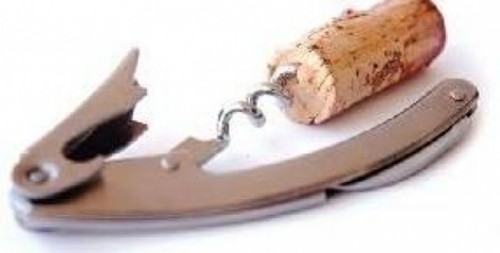Times are changing. Screw-capped wines are seeing more wine-store slots and home and restaurant cellar space than ever before. There’s an ongoing cap vs. cork debate: Twist-tops deliver the convenience modern-day consumers crave. They’re typically found on wines produced for early consumption, are user-friendly and are easy to store. Natural corks can be recalcitrant upon extraction, may fail to keep a seal due to improper storage and can possibly harbor a wine-debilitating flaw.
Still, you won’t hear me petitioning for the complete replacement of the cork by screw caps, glass stoppers, beer-cap crowns or boxes. To be honest, the new closures frighten me. The other night at a fellow cork-dork’s house, I was urged to “open it already!” It’s not that he was in a hurry, or that there wasn’t wine already poured to ponder. But, I was still in work mode. And in the wine industry, the line between vocation and avocation is often blurred.
As a sommelier, part of my occupation involves what I romantically refer to as the “liberation of wine.” Two clean mini- Zoro strokes and the foil disappears. Then my Laguiole goes into work mode. It’s a gorgeous wine key made from white bull horn—my “precious.” I insert the worm (the pig-tail looking part) into the cork and twist four-to-five times. Without a pop, I present the cork, pour a gracious ounce and a half and, like a conductor, end with an upward twist of the bottle. It’s a performance.
The impetus behind the whole corkto-cap switch may be justified. Cork is a natural harbinger of a nonvisible mold, conveniently abbreviated to TCA (trichlorianisole). It is estimated that this insidious wine fault affects at least 5 percent of all cork-finished wines. And, with more than 13 billion corks stamped out every year, that’s a lot of stinkers.
TCA’s effects can be as subtle as simply dampening a wine’s aromatic character or as noxious as creating odors of wet dog or cardboard. The term “corked” has been given to these ill-fated wines. The personal threshold for detection of TCA is a mere 3-10 parts per trillion. To give you an idea of that amount, replace parts per trillion with eye drops in an Olympic-size pool.
So, why hasn’t every producer worldwide substituted the cap for the cork? Well, for starters, the public still has a stigma attached to twist-top wines, believing the twist-top’s sole purpose is to save pennies in the production of cheap, inferior wine. But actually, a well-crafted metal twist closure is more expensive than budget synthetic cork.
The other reasons are technical, and still subject to ongoing research and debate. The pro-cork camp believes there is a small amount of air transfer released through the cork’s porous cells that aids, and is necessary, in the development of complex, tertiary aromas and flavors. Years of blind-tasting comparisons between the anaerobic environment of screw-capped wines versus the semi-porous cork closure have many premium producers convinced that cork is their only option. This is why some producers justify screwing down their early-maturing wines while corking their more age-worthy siblings.
Practically everyone has an opinion regarding the relatively new relationship between screw caps and wine. A stroll down the Sauvignon Blanc (or any other drinkwhile-young white wine) aisle affirms the screw cap’s ubiquity and acceptance by producers and consumers alike. Conversely, a glance at the wine store’s high-end glass cases proves cork is still king among nobility. Out of convenience and assurance for quality, I’m all for twisting the night away, but for the sake of romance, ritual and ageability, I know the cork is here to stay.
Louis Koppel is sommelier at Spencer’s for Steaks & Chops
Speaking of Drink
-
Sipping Portugal
Vinho Verde is the perfect spring/summer sipper.
- May 10, 2011
-
Wine & Dine
A bounty of local wine dinners in May.
- May 3, 2011
-
Pinot & Pedicures
Tasting Robert Sinskey Wines in the most unusual of venues.
- Apr 26, 2011
- More »
More by Louis Koppel
-
The History & Buzz About Wine
A brief history of the nectar and our attraction to it.
- Sep 21, 2010
-
How to Decipher Wine Descriptions
Purple Prose & White Lies: How to unravel the tasting note.
- Aug 10, 2010
-
Wine & Wood
Get your mind out of the gutter; we’re talking about oak.
- May 25, 2010
- More »




